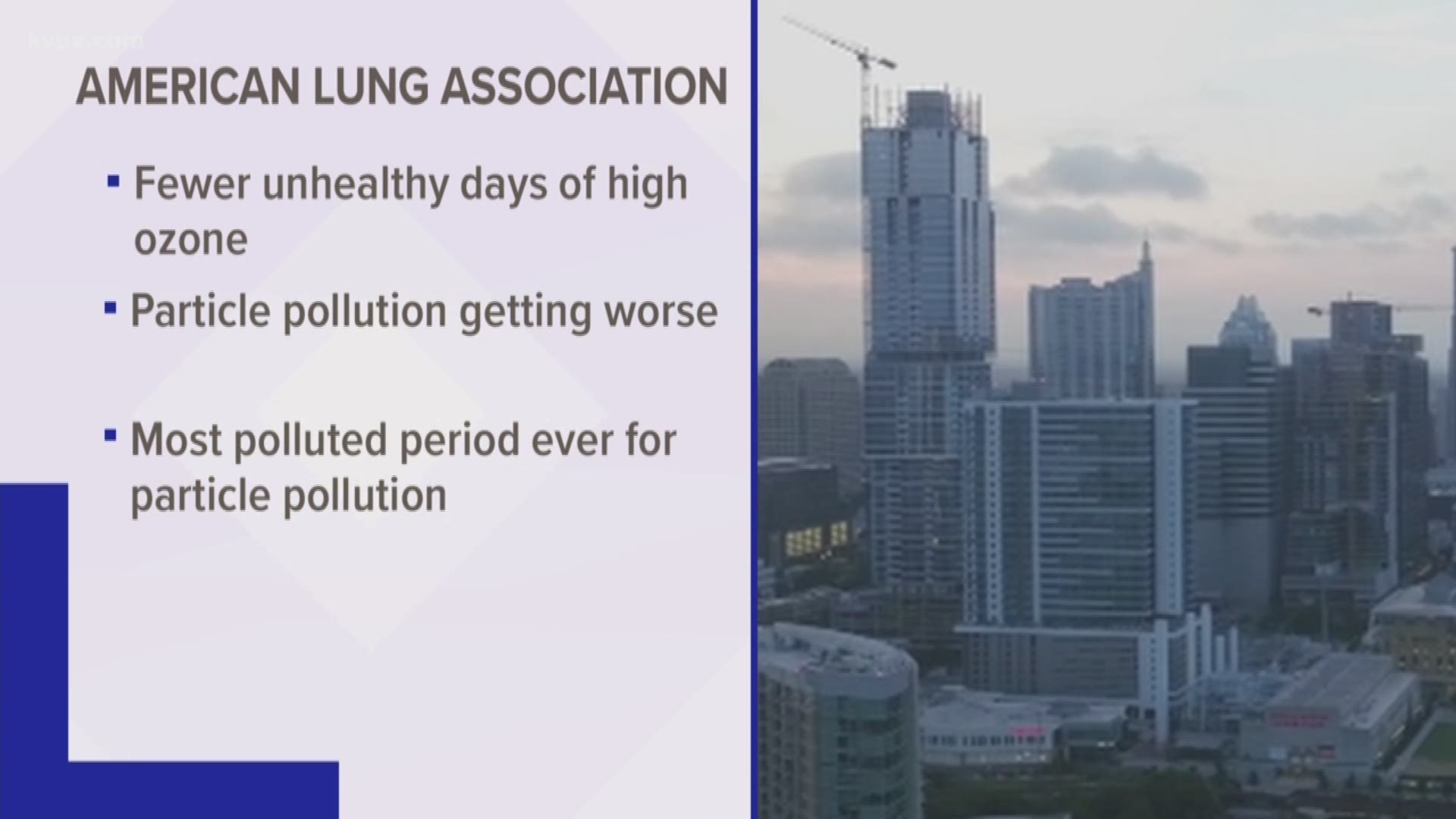AUSTIN, Texas — The American Lung Association's annual “State of the Air” report found Austin earned mixed rankings for both ozone and particle air pollutants.
Both ozone pollution, also known as smog, and particle pollution, also called soot, are dangerous to public health and can increase the risk of serious health effects such as asthma attacks, cardiovascular damage, and developmental and reproductive harm.
Although Austin’s air quality is ranked No. 69 for ozone pollution, it's the increase in particle pollution that is keeping Austin off the cleanest air in the country list.
In fact, this was the first time since 2009 that Austin wasn’t on the list.
Many factors go into increased levels of pollution, such as a rise in temperature that increases ozone pollution or changing climate patterns that fuel wildfires with dangerous smoke levels that, in return, increase particle pollution.
“Ozone pollution can harm even healthy people, but it's particularly dangerous for children, older adults and people with lung diseases like COPD or asthma,” Advocacy Drector of the American Lung Association in Texas Charlie Gagen said. “Breathing ozone-polluted air can trigger asthma attacks in both adults and children with asthma, which can land them in the doctor’s office or the emergency room. Ozone can even shorten people’s lives.”
When compared to last year’s report, Austin has experienced less unhealthy days for high ozone pollution in this year’s report.
The report also found that particle pollution levels in Austin were a bit higher than in last year’s report, which can lead to having health issues arise.
“Particle pollution can lodge deep in the lungs and can even enter the bloodstream. It can trigger asthma attacks, heart attacks and strokes and cause lung cancer,” Gagen said.
Learn more about Austin’s rankings, as well as air quality across Texas and the nation, in the 2020 “State of the Air” report at Lung.org/sota.
PEOPLE ARE ALSO READING:

